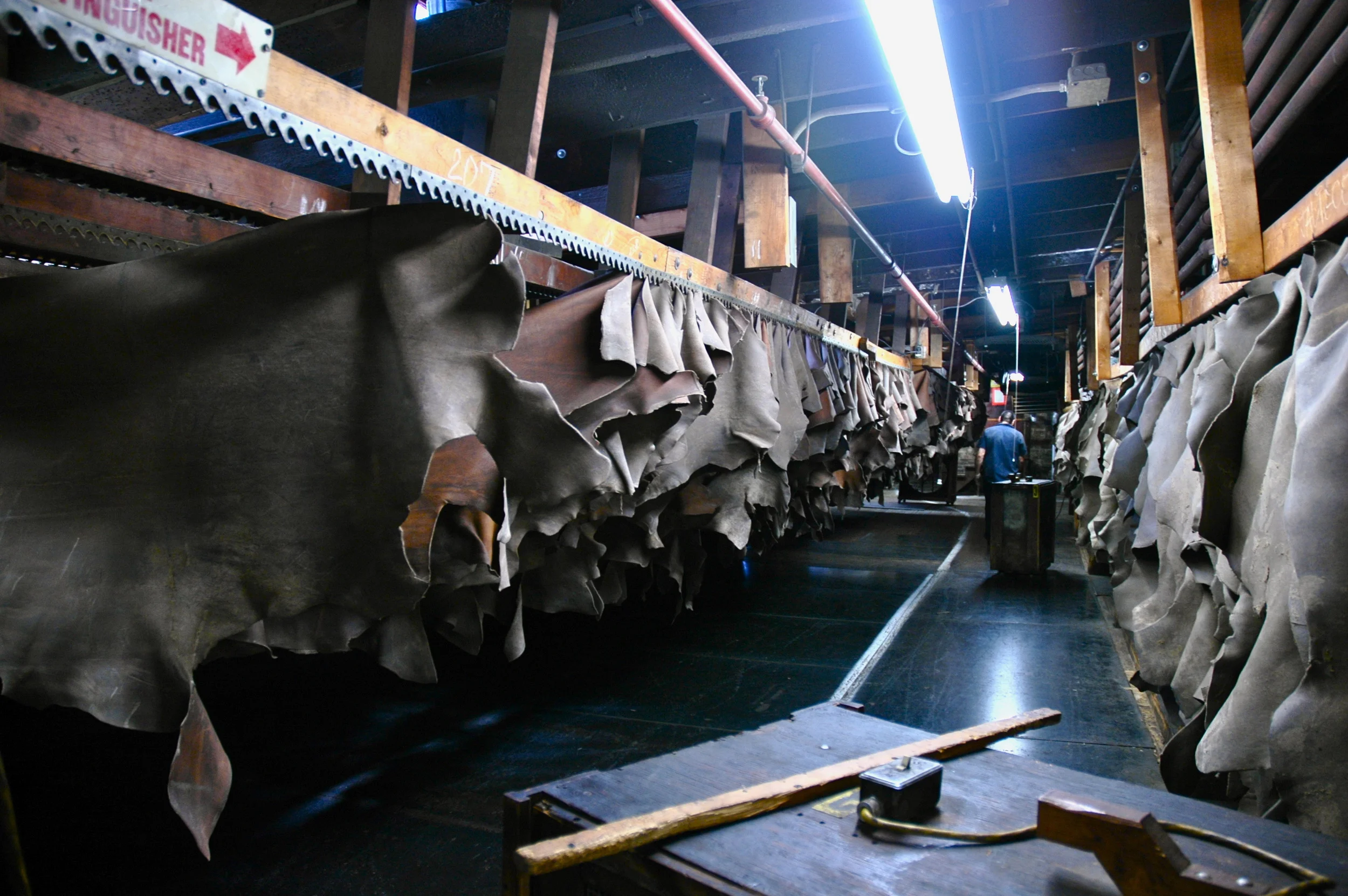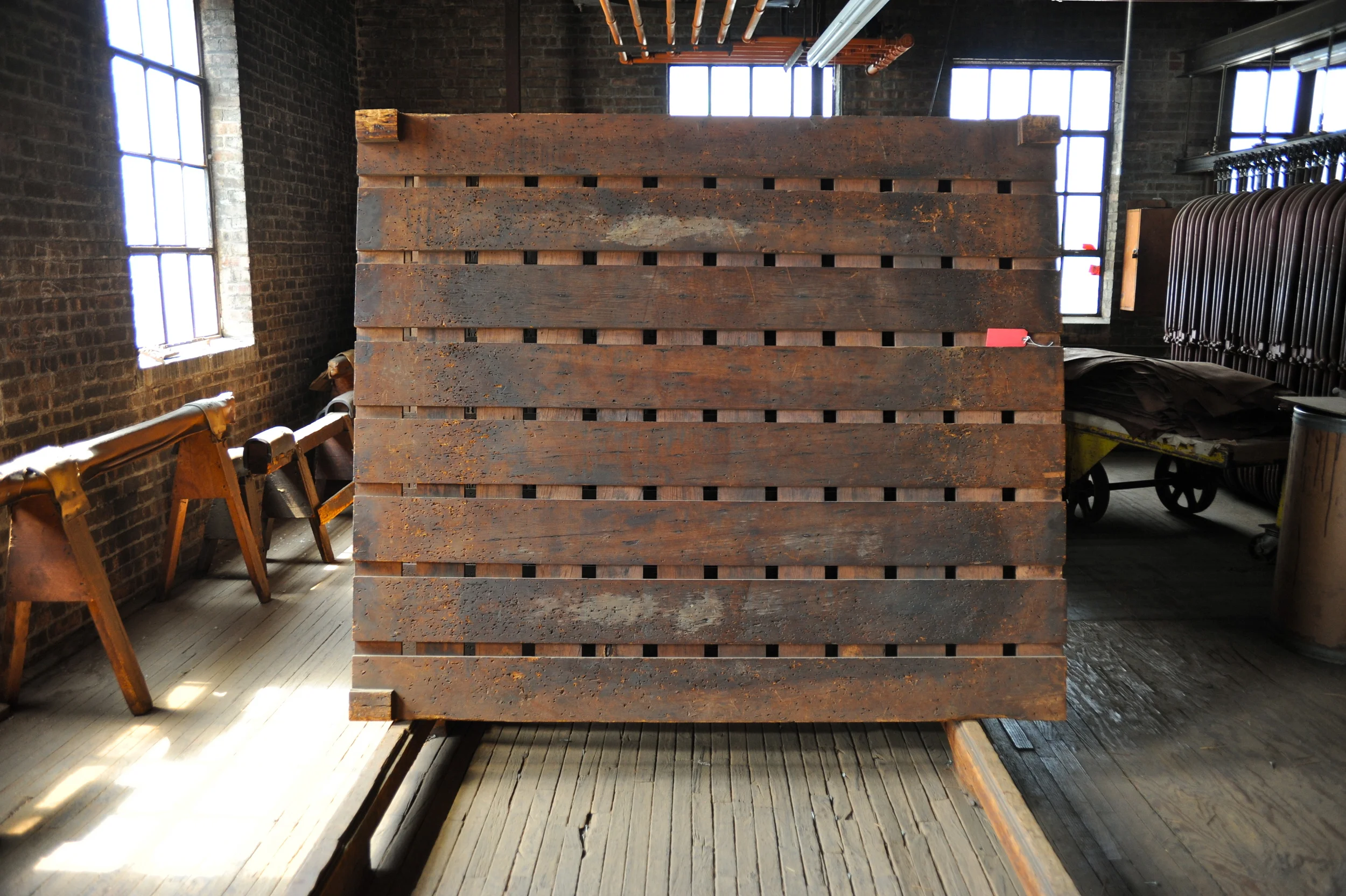Technique: Toggling and Drying
There are many processes that determine how a particular tannage will behave once the leather is finished into product. One of these processes is how the leather is dried. There is quite a bit of water used in the tanning process - descriptors like soak, float, wash, steam, bate, and pickle are evidence of that. Water is used to clean, dilute, deliver extracts and components, and buffer reactions and uptake, so management of the amount of water (and its temperature) throughout the tanning process is crucial.
Just as critical is how we remove that moisture once we're ready to actually finish the leather (in the industry, finishing typically refers to a whole department that applies and adjusts color, luster, temper or softness, and general appearance). There are four basic techniques that we use - air drying, pasting, vacuum drying, and toggling.
Air drying involves hanging the hides on hooks so that moisture can evaporate naturally, this is the slowest process and results in shrinkage of the hide. Bad for yield, but great for giving leather a "full" or "round" hand. An air dried hide will routinely shrink by 25% (approximately 6 square feet). This also yields an article that is pliable with a bit of stretch. Chromexcel is an example of an air dried leather.
Pasting is the application of leather to large glass, steel, or ceramic "plates." A plant based starch is mixed into a paste, which is used to adhere the hide to the plate. The drying process takes about 5 hours and utilizes steam, heat, and moving air. Think of a pasting unit as a big combination oven with different zones. This yields a leather with "flat," uniform grain. By sticking the leather against a medium that is static, it keeps the leather from shrinking. Good for yields, and good for products that need to not stretch - like load bearing straps.
Vacuum drying, which is probably the most complex of the four options, is basically the same as pasting. The main difference is that we can drop the pressure inside this (massive) machine and draw the water out. This is the most time effective of the processes, and requires skill and diligence to do correctly.
That brings us to toggling. Toggled hides are allowed to air dry, but they a stretched gently through the use of small clamps called toggles. It allows the leather to shrink and plump some, but holds it firm to reduce stretchability. I have to admit, my motivation for this post was the fact that the toggling room is my favorite room in the building. It's unnaturally quiet and well lit by natural light - and it's clean as far as rooms in a tannery go. Toggling is the most time consuming in terms of labor, but it's not as time consuming as "tacking," the predecessor to toggling. Tacking is the same as toggling, except instead of reusable clamps, we used hammers, nails, and wood frames.
Each Method has it's application, and many times what works for one leather doesn't work for another. On the other hand, sometimes different options work on the same leather, and just result in different products. Confused? Good.










